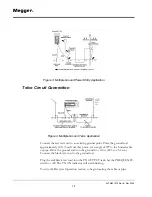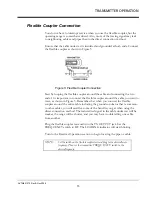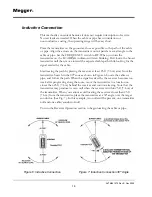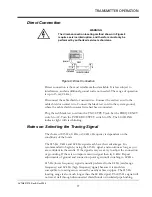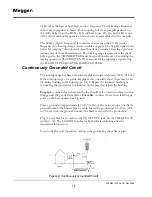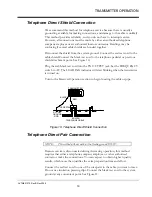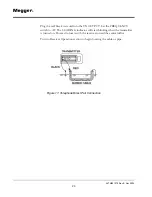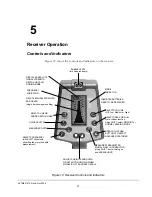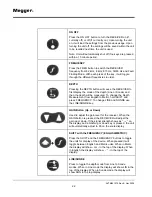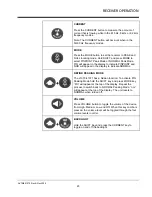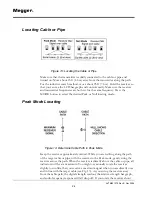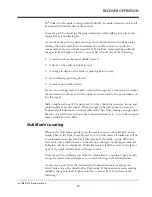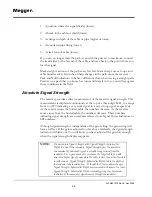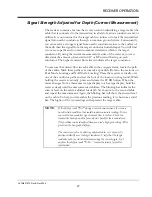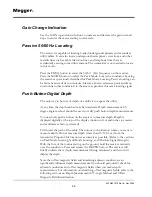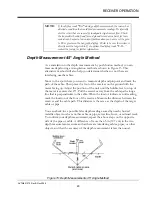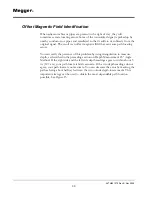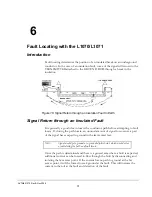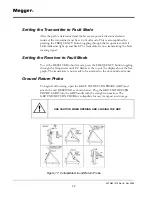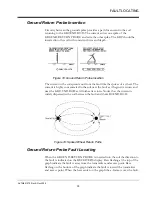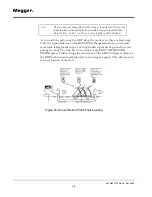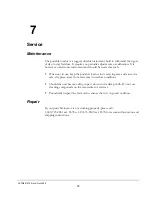
M
AVTM651070 Rev B Nov 2006
28
Gain Change Indication
Use the GAIN up and down buttons to increase and decrease the gain in small
steps to center the meter reading to mid-scale.
Passive 50/60 Hz Locating
The receiver is capable of locating loaded underground primary and secondary
utility cables. It can also locate underground water pipes, sewer lines, and other
metallic lines such as cable television lines, and telephone lines that are
accidentally carrying some utility current. The transmitter is not needed to locate
in this mode.
Press the FREQ button to select the 50/60~ (Hz) frequency on the receiver.
Press the MODE button to select the Peak Mode. Locate the conductor by using
the receiver as previously described for Peak Mode Locating. Passive locating can
be faster because of its convenience. Start at a known reference point and keep
in mind that other conductors in the area may produce this same locating signal.
Push-Button Digital Depth
The only way to be sure of depth of a utility is to expose the utility.
At any time, the depth readout may be inaccurate. Depth measurement, 45-
degree angle method, should be used to verify push button depth measurements.
You need only push a button on the receiver to measure depth. Depth is
displayed digitally at the top of the display window in feet and inches (or meters
and centimeters, factory selected).
First locate the path of the cable. Then move to the location where you want to
measure depth. Do not measure depth closer than 15 ft (4.6 m) from the
transmitter. Pinpoint this location as accurately as possible. (Refer to the sections
on Peak Mode Locating, Null Mode Locating, and Absolute Signal Strength).
With the foot of the locator resting on the ground, hold the receiver vertically
over the conductor. Press and release the DEPTH button. The receiver will
briefly indicate that a depth measurement is being calculated, and then it will
display the depth.
Note that offset magnetic fields and interfering adjacent conductors can
significantly influence depth measurements. You should periodically check for
adjacent conductors and offset magnetic fields when you make depth
measurements. For information on identifying offset magnetic fields, refer to the
following sections on Depth Measurement 45° Angle Method and Offset
Magnetic Field Identification.
Summary of Contents for L1070
Page 2: ...L1070 and L1071 Portable Locator Instruction Manual...
Page 4: ......
Page 8: ...AVTM651070 Rev B Nov 2006 iv M...

